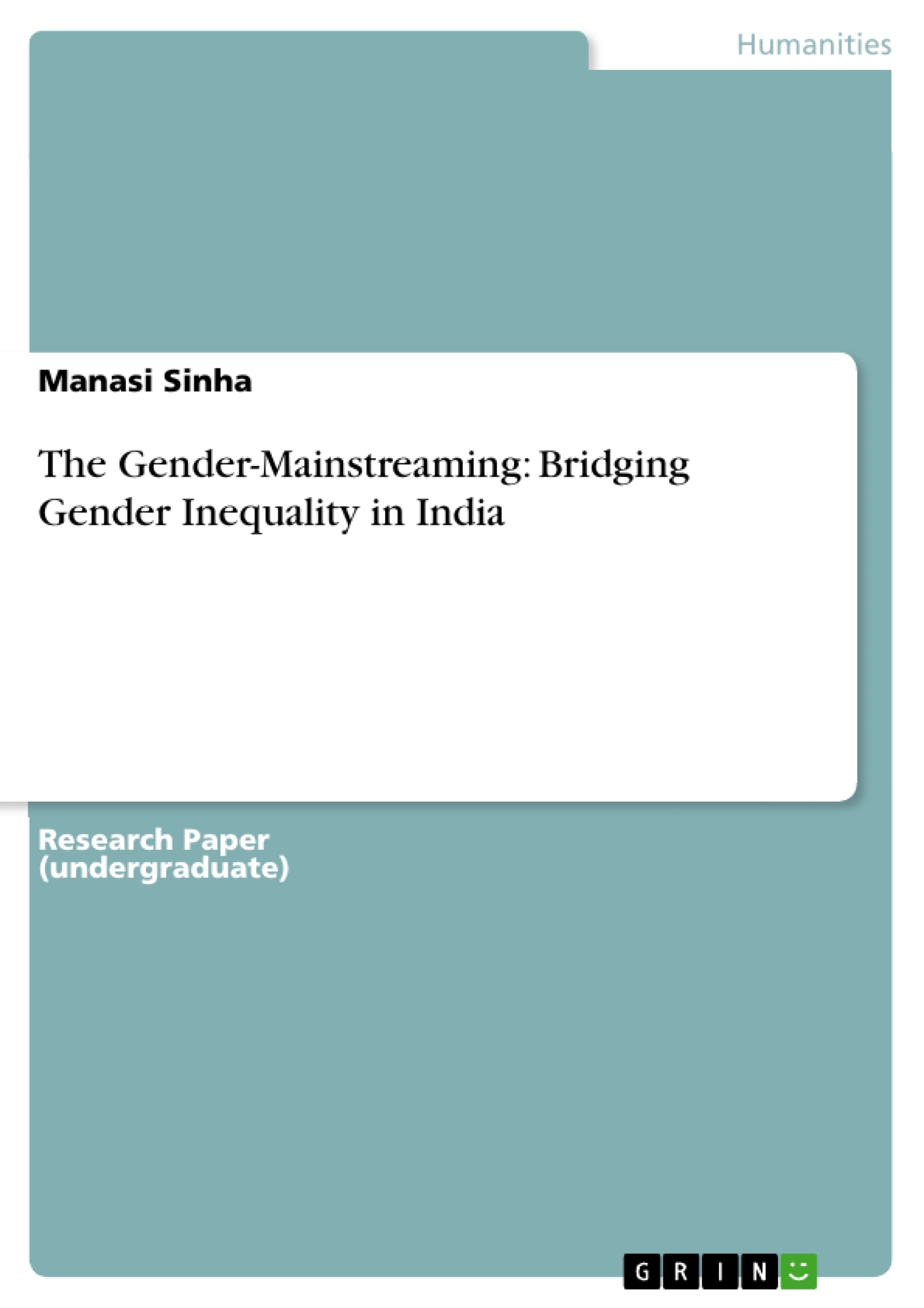The socially constructed gender roles which rooted in India’s socio structural set up
internalizes further the sense of gender inequality or gender bias and accepted it as
‘Norm’. This gender inequality manifests across social, economic and political domain
of Indian society in form of preference of boy child over a girl child, falling sex ratio,
lack of participation of women in decision making process, lack of control of women
over power structure in society. This further results in to domestic violence, sexual
harassment, rape, molestation and may more crimes.
There have been many gender equality measures taken place at policy level in order to
reduce gender discrimination since independence. However, even after 65 years of
independence India is still burning with gender discrimination at all levels. The reason
behind this gender bias has been the fact that the gender equality measures are mostly
oriented towards women and sought to achieve gender equality through positive action
or economic opportunity for women only.
This paper therefore, attempts to analyze the new gender equality measure namely the
gender-mainstreaming strategy as a way to reduce this gender discrimination. The
paper dwells into addressing three questions: How gender-mainstreaming strategy
could be a better way to eliminate this gender bias? How is it different from other
gender equality measures? and What results it could yield in the process of its
implementation? Therefore the objective of the paper is to study how the socially
constructed gender roles result into gender discrimination in society and how this
discrimination can be removed through bringing changes in mindset of people and
society at large with the help of gender-mainstreaming strategy.
Table of Contents
- Gender: A Social Construct
- Normalization of Gender Relations
- Manifestations of Gender bias in Indian Society and Consequences
Objectives and Key Themes
This paper aims to analyze the gender-mainstreaming strategy as a way to reduce gender discrimination in India. It seeks to answer three key questions: how gender-mainstreaming could be a more effective approach to eliminating gender bias, how it differs from other gender equality measures, and what results it could yield in its implementation. The paper's objective is to understand how socially constructed gender roles result in gender discrimination and explore how this discrimination can be removed through societal and individual mindset changes enabled by the gender-mainstreaming strategy.
- The social construction of gender and its role in perpetuating gender inequality.
- The impact of gender bias on Indian society, particularly in the areas of social, economic, and political participation.
- The potential of gender-mainstreaming as a strategy to reduce gender discrimination and promote gender equality.
- Comparison of gender-mainstreaming to other gender equality measures.
- The potential outcomes of implementing gender-mainstreaming in India.
Chapter Summaries
- Gender: A Social Construct: This section explores the concept of gender as a social construct and examines how societal norms and expectations shape gender roles and identities. It discusses the normalization of gender relations through hegemonic structures and the influence of various agents in perpetuating these structures.
- Manifestations of Gender bias in Indian Society and Consequences: This chapter delves into the prevalence and consequences of gender bias in Indian society. It highlights the alarming decline in India's rankings in various indices such as HDI and GDI and discusses the multifaceted nature of gender inequality in India, including the impact of factors like caste, patriarchy, religion, culture, and economic disparities.
Keywords
This paper focuses on key concepts such as gender, gender bias, gender inequality, gender-mainstreaming, social construction, hegemony, normalization, and the impact of these concepts on Indian society. The paper also explores the potential of gender-mainstreaming as a strategy to achieve gender equality in India.
- Quote paper
- Manasi Sinha (Author), 2013, The Gender-Mainstreaming: Bridging Gender Inequality in India, Munich, GRIN Verlag, https://www.grin.com/document/265536



